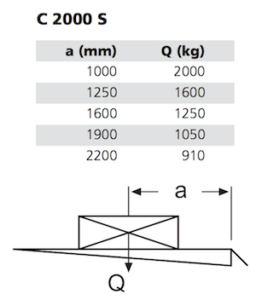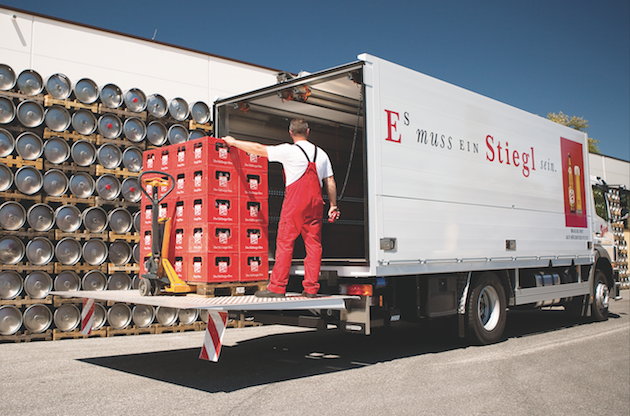Every tail lift has safe working load and corresponding load centre specifications set by the manufacturer. Gough Transport Solutions can’t stress enough the importance of operators heeding maximum lifting weights in line with load centre specifications when using tail lifts.
In the hustle and bustle of day-to-day operations of a business, it can be easy to dismiss seemingly small and apparently insignificant details like the safe working load and corresponding load centre requirements of one of the most widely used pieces of lifting equipment in the transport industry – the tail lift.
But according to Gough Transport Solutions, paying careful attention to a vital consideration in tail lift loading known as the load centre is paramount to ensuring safety for the operator and longevity of the equipment.
The load centre, as the term suggests, is the mid-point where the pallet or load is situated and exerting downward force on the tail lift. Therefore, for Palfinger tail lifts the maximum allowable or safe working load for most models is calculated at the specified load centre of one metre (1,000mm) – measured from the leading edge of the platform.
Due to the fact that tail lifts operate on the cantilever principle, the allowable lifting capacity proportionally diminishes the further the load centre is moved towards the tip of the tail lift platform.
A great example of how a loading weight can change in day-to-day operations is when an operator who previously used a manual pallet jack changes to electric. While a manual jack might weigh around 75kg, an average electric jack weighs 500kg and this additional weight must be added to the pallet weight to provide the total weight the tail lift will be shouldering.
In addition, the extra length of an electric pallet jack compared to a manual unit could result in the load centre shifting, thus further reducing the allowable lifting weight.
Another variable that reduces lifting capacity is if the operator rides on the platform while lifting the load.
“At Gough Transport Solutions, the importance of understanding our tail lift customers’ cargo and load operation is paramount when offering the right solution for their tail lift requirements,” said Daniel Mierendorff, National Business Development Manager – Gough Transport Solutions.
“Too many times we’ve seen the right lifting capacity with the wrong load centre, placing undue strain on the various tail lift components. In the worst-case scenario equipment can fail with the potential for injury which could prove disastrous for the operator.”
Daniel goes on to say that the critical relationship between the load centre and the lifting capacity of tail lifts is not always adequately explained to or understood by the operator. He provided the following example to illustrate his point.
“Let’s say you regularly lift 1,500kg of cargo per pallet and you use an electric pallet jack to do so.
You have a tail lift that has the following specifications:
• 2,000kg lifting capacity
• Platform is 2,600mm (2.6m) long (deep)
• Platform has a 1,000mm (1m) load centre.
“Where the cargo is positioned on the platform affects the total lifting capacity of the tail lift,” he continued. “If your cargo is loaded or unloaded at 1,600mm (1.6m) load centre then the tail lift’s lifting capacity is greatly reduced and, in this case, can only lift 1,250kg.
“The average electric pallet jack weighs around 500kg so regardless of which end you are picking up or putting down the pallet, you are already exceeding your total lifting capacity by 250kg.
“While tail lifts should and in most cases do have a pressure relief valve which prevents the unit from physically lifting above the rated lifting capacity, lowering the load has no such limitation as it’s a controlled gravity-down system.
Daniel ends by imploring tail lift operators to ensure they make note of and can clearly identify the load centres and understand the load centre chart or table provided with the tail lift.
“Following the instructions will ensure safe loading and unloading, lowering the risks of fatigue-damage to the tail lift, mitigating the potential of injury to the operator and generally increasing the life of the tail lift.”



